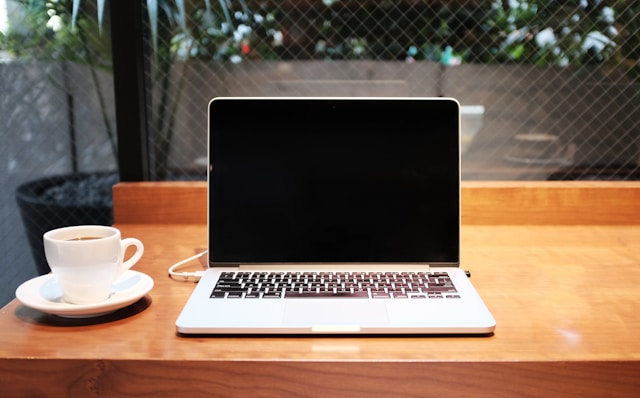In a world where we juggle smartphones, laptops, tablets, and dozens of digital platforms, it’s no surprise that our digital spaces become just as cluttered as our physical ones. From a chaotic desktop to an overflowing inbox and countless unnamed files scattered across devices, digital clutter can drain your productivity, increase stress, and make it harder to find what you need when you need it.
The good news? You can take control. In this guide, you’ll learn how to organize your digital life through simple, actionable steps that will leave you feeling refreshed, focused, and more efficient in your daily routines.
Step 1: Clean Up Your Devices
The first step in digital decluttering is to tidy up your actual devices. Whether it’s your laptop, phone, or tablet, they’re often the dumping ground for random files, unused apps, and digital junk that slow you down.
-
Declutter your desktop and downloads folder: If your desktop is covered in screenshots and forgotten documents, start by deleting what you no longer need and organizing the rest into folders.
-
Uninstall unused apps and software: Scroll through your app list and remove anything you haven’t opened in months.
-
Clear cache and junk files: Use built-in tools like Windows Disk Cleanup or macOS Storage Management to free up space.
A cleaner device isn’t just easier to navigate it often runs faster too.
Step 2: Organize Your Files
Without a clear system, finding files becomes a nightmare. Creating a solid file management structure is essential to organize files efficiently and avoid wasting time searching.
-
Create a folder hierarchy: Group documents by category (Work, Personal, Finances, Projects) and then sub-categorize further.
-
Use consistent naming conventions: Include dates or version numbers in file names, e.g., “Invoice_ClientName_2025_07.pdf”.
-
Store files in the cloud: Use services like Google Drive, Dropbox, or OneDrive for accessibility, backups, and collaboration.
Cloud storage tips: Always back up important files and enable two-factor authentication for extra security.
Step 3: Tame Your Email Inbox
An overloaded email inbox can feel overwhelming, especially if you’re drowning in promotional emails and unread notifications. Email organization can significantly reduce digital stress and help you focus on what truly matters.
-
Unsubscribe from newsletters you don’t read: Use tools like Unroll.me or simply search “unsubscribe” in your inbox and clean house.
-
Use folders and labels: Create categories like “Action Required,” “Waiting,” or “Receipts” to keep things sorted.
-
Try Inbox Zero or batching techniques: Inbox Zero focuses on keeping your inbox empty or nearly empty, while batching means checking email only at designated times each day.
A tidy inbox saves time and helps you stay on top of tasks.
Step 4: Streamline Your Digital Tools
We often use multiple apps that serve similar purposes, which creates confusion and inefficiency. To reduce digital clutter, streamline your digital toolkit and make each tool serve a clear purpose.
-
Audit your apps: Eliminate redundancy (e.g., using both Trello and Asana) and pick the best fit for your workflow.
-
Organize your tools: Group similar apps into folders or tabs on your device or browser.
-
Use productivity apps: Tools like Notion, Todoist, or password managers like 1Password can centralize tasks, notes, and credentials.
When you organize your digital life through app streamlining, you make your workday more seamless.
Step 5: Manage Photos & Media
Digital media can quickly spiral out of control. From thousands of selfies to years of vacation photos, managing these files is key to a clean digital environment.
-
Delete duplicates and blurry images: Use apps like Gemini or Google Photos’ built-in suggestions.
-
Organize into albums or folders: Create albums by event, year, or theme for quick access.
-
Back everything up: Use cloud services like iCloud, Google Photos, or Amazon Photos for safekeeping.
Not only does this save storage space, but it also makes your memories easier to enjoy and share.
Step 6: Review Social Media & Notifications
Social media platforms and constant notifications can be major sources of distraction and anxiety. A digital cleanup should include managing how and when you engage with these platforms.
-
Audit your social media accounts: Unfollow accounts that no longer interest you or add value. Delete old posts or even entire accounts you no longer use.
-
Turn off non-essential notifications: Go into your phone or app settings and silence anything that doesn’t truly require your immediate attention.
-
Set time limits: Use Screen Time on iOS or Digital Wellbeing on Android to set healthy boundaries.
Reducing digital noise helps you reclaim time and mental clarity.
Step 7: Create a Maintenance Routine
Decluttering once isn’t enough you need a maintenance plan to keep your digital life organized long-term.
-
Weekly reviews: Spend 15–30 minutes each week reviewing files, clearing inboxes, and backing up new content.
-
Monthly audits: Once a month, check your storage usage, update apps, and delete anything you no longer need.
-
Automate where possible: Use automation tools like IFTTT or Zapier to handle recurring tasks like file backups or email sorting.
Just like tidying a physical space, small habits go a long way in maintaining digital organization.
Conclusion
Learning how to organize your digital life isn’t just about being tidy it’s about reclaiming your time, reducing stress, and creating systems that support your goals. Whether you’re managing your inbox, decluttering your desktop, or reviewing your social media habits, every small step contributes to a more focused and intentional digital experience.

